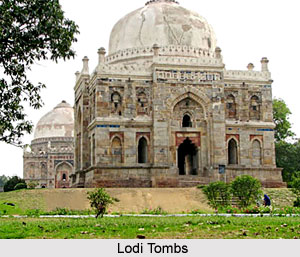 Lodi Tombs, situated in the scenic beauty of the Lodi Gardens along the Lodi road, is one of the most popular tombs of Delhi. The tombs built in the 16the century are reminiscent of the Sayyid and Lodi rulers. The tomb is situated about 3-kms to the west and is adjacent to the International Centre.
Lodi Tombs, situated in the scenic beauty of the Lodi Gardens along the Lodi road, is one of the most popular tombs of Delhi. The tombs built in the 16the century are reminiscent of the Sayyid and Lodi rulers. The tomb is situated about 3-kms to the west and is adjacent to the International Centre.
The tomb is the flag bearer of the famous Lodi architectural style and design and the tomb is built is such a way that it can give the visitors a false notion of being two storied structure due to the flawless craftsmanship.
History of the Lodi Tombs
Sikandar Lodi was the Sultan of Delhi between 1489 and 1517 CE and he was the son of Bahlul Lodi. After the death of his father in 1489, Sikandar Lodhi supposed the supremacy. Upon Sikandar Lodi`s death in 1517 CE and his son Ibrahim Lodi built the tomb. The Tomb of Sikandar Lodi was inspired in parts by the tomb of Muhammad Shah which is also situated in the Lodhi Gardens.
Architecture of the Lodi Tombs
This tomb is an architectural wonder and it`s really a treat to watch. The tomb of Sikandar Lodi, built by his son Ibrahim Lodi is said to be a beautiful depiction of the Mughal architecture. The octagonal structure, deep veranda and tall arches depict the revival of the Sayyid architectural style. The tomb of Sikandar Lodi is adorned with a double dome on top and with a set of beautiful pillars and arches. The tomb is entered from the south through a huge gateway. The other mausoleums in the Lodi Gardens are the tomb of Muhammad Shah, Shish Gumbad and Bara Gumbad. The Bara Gumbad mosque is magnificently structured with floral patterned walls and is inscripted with quotes from the Holy Quran. It is a fine instance of plaster decoration. It is believed that all these tombs are the remnants of the city that was to be built in Delhi.



















